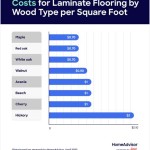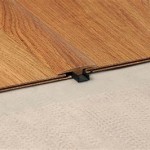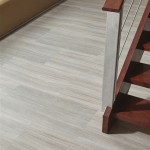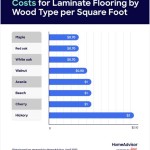How Much Should I Charge To Install Ceramic Tile Flooring?
Determining the appropriate rate for ceramic tile flooring installation involves a multifaceted assessment process. Understanding the variables influencing pricing is crucial for both installers seeking fair compensation and clients aiming for budget-conscious project management. This analysis provides a framework for calculating accurate and competitive installation charges.
The cost to install ceramic tile flooring can vary significantly depending on several factors, including the size and complexity of the project, the type and quality of the tile, the location, and the installer's experience level. A comprehensive understanding of these elements is essential for formulating an accurate estimate.
Key Point 1: Factors Influencing Labor Costs
The labor cost associated with ceramic tile installation constitutes a significant portion of the overall project expense. This cost is susceptible to several key factors. The most prominent among these is the project's scale, measured in square footage. Larger areas invariably necessitate more labor hours, directly translating to higher costs. The complexity of the installation also plays a crucial role. Intricate patterns, such as mosaics or herringbone designs, demand greater precision and time investment compared to simpler layouts. This increased complexity necessitates a higher labor rate.
Furthermore, the substrate preparation requirements significantly impact labor expenses. If the existing subfloor is uneven, damaged, or requires extensive leveling, the additional preparation work will add to the overall labor hours. This might involve applying self-leveling compounds, repairing cracks, or reinforcing the existing subfloor. Access to the installation area also plays a role. Installations in hard-to-reach areas, such as small bathrooms or awkwardly shaped rooms, often require more time and effort, thereby increasing labor costs. Similarly, installations on upper floors that require carrying materials up stairs might incur additional charges.
The installer's experience and skill level are also paramount. Highly experienced and skilled installers often command higher rates due to their expertise and efficiency. They are typically able to complete the job faster and with higher quality, minimizing potential errors and rework. However, less experienced installers may offer lower rates, but it is essential to carefully evaluate their qualifications and ensure they possess the necessary skills to perform the installation correctly. Licensing and insurance also contribute to the cost. Licensed and insured installers typically charge more to cover the cost of these protections, but they also provide clients with peace of mind knowing that they are protected against potential liabilities.
Geographic location exerts a substantial influence. Labor costs tend to be higher in metropolitan areas and regions with a high cost of living compared to rural areas or regions with a lower cost of living. The demand for installers in a particular area can also affect pricing. If there is a high demand and limited supply of installers, prices may increase. Conversely, if there is a low demand and ample supply of installers, prices may be more competitive.
Key Point 2: Materials and Associated Expenses
In addition to labor, the cost of materials represents a substantial component of the overall tile installation expense. The selection of ceramic tile itself profoundly affects the budget. A wide spectrum of ceramic tile options exists, ranging from inexpensive, mass-produced varieties to high-end, designer tiles. Factors such as tile size, finish (glazed or unglazed), pattern, and durability contribute to the price. Larger tiles often cost more per square foot than smaller tiles, and specialty finishes or intricate patterns can also increase the price. The quantity of tile required is directly proportional to the area being covered, with an allowance of approximately 10-15% for waste due to cuts and breakage. This waste factor should be incorporated into the total tile order to avoid running short during the installation process.
Beyond the tiles themselves, other essential materials add to the overall cost. Thin-set mortar, the adhesive used to bond tiles to the subfloor, is a critical material. The type of thin-set required depends on the type of tile being installed and the substrate material. Modified thin-set mortars, which offer enhanced bonding strength and flexibility, typically cost more than unmodified mortars. Grout, which fills the spaces between tiles, also contributes to the material expense. Similar to thin-set, the type of grout required depends on the type of tile and the desired aesthetic. Epoxy grouts, which are known for their stain resistance and durability, generally cost more than cement-based grouts.
Furthermore, various additional materials are frequently needed. Subfloor preparation materials, such as self-leveling compound, backer board, or underlayment, may be required to create a smooth and stable surface for tile installation. Sealants are also essential for protecting the grout and preventing water damage, particularly in wet areas like bathrooms and kitchens. Specialty tools and equipment, such as tile saws, grout floats, and sponges, may be required for the installation. While many installers possess these tools, some may charge a rental fee or incorporate the cost of tool wear and tear into their estimates. Delivery fees for materials will also impact the total project cost. These fees can vary depending on the distance and the supplier's delivery policies.
Finally, factors like removal and disposal of existing flooring should also be considered. If the existing flooring needs to be removed and disposed of, this will add to the overall cost. The cost of disposal can vary depending on the type of flooring being removed and local disposal regulations. It’s important to remember to factor in all materials and labor to accurately estimate the final project cost.
Key Point 3: Calculating a Fair Installation Rate
Determining a fair installation rate involves a careful consideration of all the factors outlined previously. A common approach is to calculate the cost per square foot. This method takes into account the labor hours required, the cost of materials, and overhead expenses. To arrive at a realistic cost per square foot, installers should meticulously track their time and material usage on previous projects to establish a baseline. They should also research prevailing rates in their local market to ensure their pricing is competitive.
Another approach is to charge an hourly rate. This method is often preferred for smaller or more complex projects where the total square footage may not be the primary driver of cost. When charging an hourly rate, it is essential to clearly communicate the rate to the client upfront and provide a detailed estimate of the total hours required for the project. This helps to manage client expectations and avoid misunderstandings. The hourly rate should reflect the installer's experience level, skill set, and overhead expenses.
Regardless of the pricing method used, it is crucial to provide clients with a detailed written estimate outlining all the costs involved. The estimate should include a breakdown of labor costs, material costs, and any other applicable fees. This transparency builds trust and helps to ensure that the client is fully informed about the project's financial implications. The estimate should also clearly state the scope of work and any exclusions, such as subfloor repairs or demolition of existing flooring. It is recommended to obtain multiple quotes from different installers to compare pricing and services. However, it is important to avoid selecting an installer solely based on the lowest price. Consider the installer's experience, reputation, and the quality of their work.
Furthermore, it is essential to factor in profit margin. The profit margin should be sufficient to cover overhead expenses, such as insurance, licensing fees, advertising, and administrative costs, as well as to provide a reasonable return on investment. The profit margin will vary depending on the installer's business model and the competitive landscape. Regular review and adjustment of pricing are essential to ensure that the installation rates remain competitive and profitable. This involves tracking market trends, monitoring material costs, and evaluating the efficiency of the installation process.
It is also crucial to have a written contract that outlines the scope of work, payment terms, and any guarantees or warranties. The contract should be reviewed and signed by both the installer and the client before the project begins. This helps to protect both parties and avoid potential disputes. The contract should also include a clause addressing unforeseen circumstances or changes to the scope of work. This allows for adjustments to the pricing and timeline if unexpected issues arise during the installation process.
Finally, consider offering different service packages to cater to different client needs and budgets. This could include a basic installation package with standard materials and a premium package with upgraded materials and enhanced features. Offering different packages allows clients to choose the level of service that best meets their needs and budget. It also allows installers to increase their revenue and attract a wider range of clients.

Ceramic Tile Installation Costs In 2024 Forbes Home

Ceramic Tile Flooring Installation Cost Fixr

How Much Does Tile Installation Cost 2024 Guide

Tile Flooring Installation Cost Floor S Fixr

What Is The Average Cost To Install Tile Floors Rubi Blog Usa

2024 Ceramic Tile Installation Cost A Complete Guide Angi

Ceramic Tile Flooring Installation Cost Fixr

Ceramic Tile Flooring Installation Cost Fixr

How Much Does It Cost To Install Or Replace Tile Homeserve Usa

How Much Does Bathroom Tile Installation And Retiling Cost Forbes Home
Related Posts








